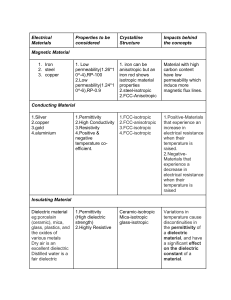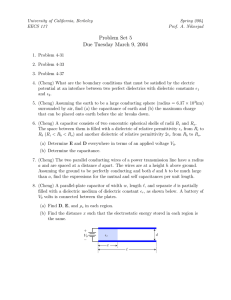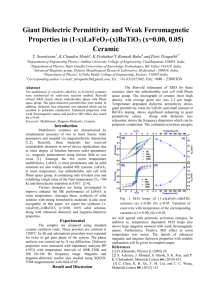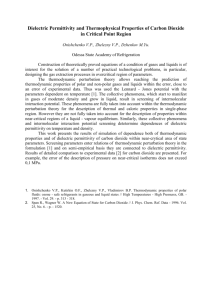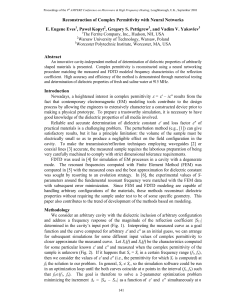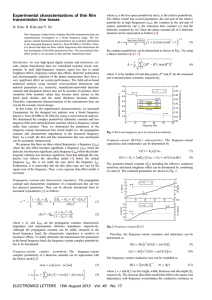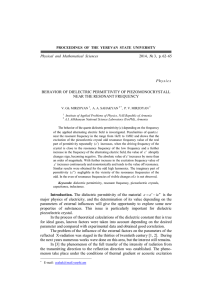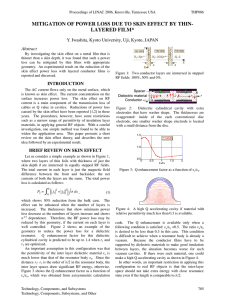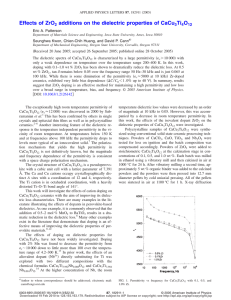Electrostatics: Symbols, Definitions & Formulas
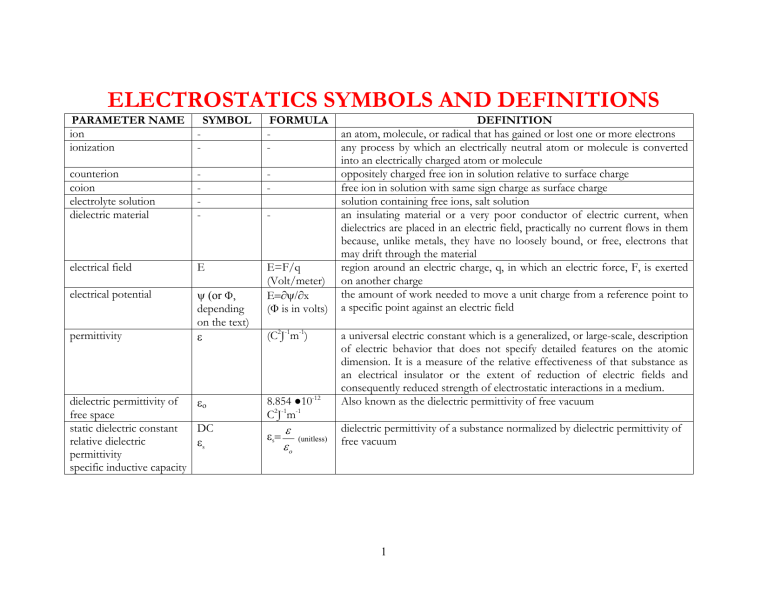
ELECTROSTATICS SYMBOLS AND DEFINITIONS
PARAMETER NAME SYMBOL FORMULA ion ionization counterion coion electrolyte solution dielectric material electrical field electrical potential permittivity
-
-
-
-
E
ψ (or Ф , depending on the text)
ε
-
-
-
E=F/q
(Volt/meter)
E =∂ψ/∂ x
( Ф is in volts)
(C 2 J -1 m -1 )
DEFINITION an atom, molecule, or radical that has gained or lost one or more electrons any process by which an electrically neutral atom or molecule is converted into an electrically charged atom or molecule oppositely charged free ion in solution relative to surface charge free ion in solution with same sign charge as surface charge solution containing free ions, salt solution an insulating material or a very poor conductor of electric current, when dielectrics are placed in an electric field, practically no current flows in them because, unlike metals, they have no loosely bound, or free, electrons that may drift through the material region around an electric charge, q, in which an electric force, F, is exerted on another charge the amount of work needed to move a unit charge from a reference point to a specific point against an electric field
ε
ο a universal electric constant which is a generalized, or large-scale, description of electric behavior that does not specify detailed features on the atomic dimension. It is a measure of the relative effectiveness of that substance as an electrical insulator or the extent of reduction of electric fields and consequently reduced strength of electrostatic interactions in a medium.
Also known as the dielectric permittivity of free vacuum dielectric permittivity of free space static dielectric constant relative dielectric permittivity specific inductive capacity
DC
ε s
8.854 ● 10 -12
C 2 J -1 m -1
ε s
=
ε
ε o
(unitless) dielectric permittivity of a substance normalized by dielectric permittivity of free vacuum
1
dielectric constant of free vacuum
ε
V ε
V
=
ε
ε o o
=1
The perfect electrical insulator is a vacuum, which has a DC of 1.00000. By comparison, air has a DC of 1.00059, almost the same as a vacuum, and water has a DC value of 78.2. A. polymer with ionizable groups along its chain, carries fixed charge polyelectrolyte ionomer
Electrical migration forces
Electroquasistatic
−
∂
∂ t
(µ
H
) ≈ 0
−
Electrical force an ion feels in solution in response to the electrical field present.
Negligible time-varying magnetic fields are present and therefore an electrical potential can be defined. (This is usually true unless you are standing in an
MRI machine, for example.)
Field produced by either a magnet or by current flows. Magnetic field Η (Tesla)
Faraday’s constant
F 96,500
C/mole
Amount of charge in one mole of electrons.
Universal Gas Constant
Debye length
R 8.314
κ −1
J .
mole
(nm)
-1.
K -1
It is defined in terms of the Boltzmann constant (k number (N
A
): R = N
A k
B
Characteristic length of electrostatic interactions
B
) and Avogadro’s
Other handy references:
∇ .
Ε Divergence of E
=
∂
E x
∂ x
+
∂
E y
∂ y
+
∂
E z
∂ z
∇Φ Gradient of
Φ
E x
, E y
, and E z
are the x, y, and z components of the E vector (divergence takes a vector and makes a scalar)
= i x
∂Φ
∂ x
+ i y
∂Φ
∂ y
+ i z
∂Φ
∂ z the i
ˆ ’s are the unit directional vectors (gradient takes a scalar and makes a vector)
∇ 2 Φ Laplacian of
Φ (div grad
Φ)
=
∂ x
2
+
∂ y
2
+
∂ z
2
2
pKa The pKa of an acid is the pH at which it is half dissociated, where [A-] =
[HA]
For the ionization of a weak acid,
HA ↔ H + + A -
The apparent equilibrium constant K is
K =
[
H
+ ][
A
− ]
[
HA
]
The pKa is then defined as pKa = -log K = log (1/K)
3
